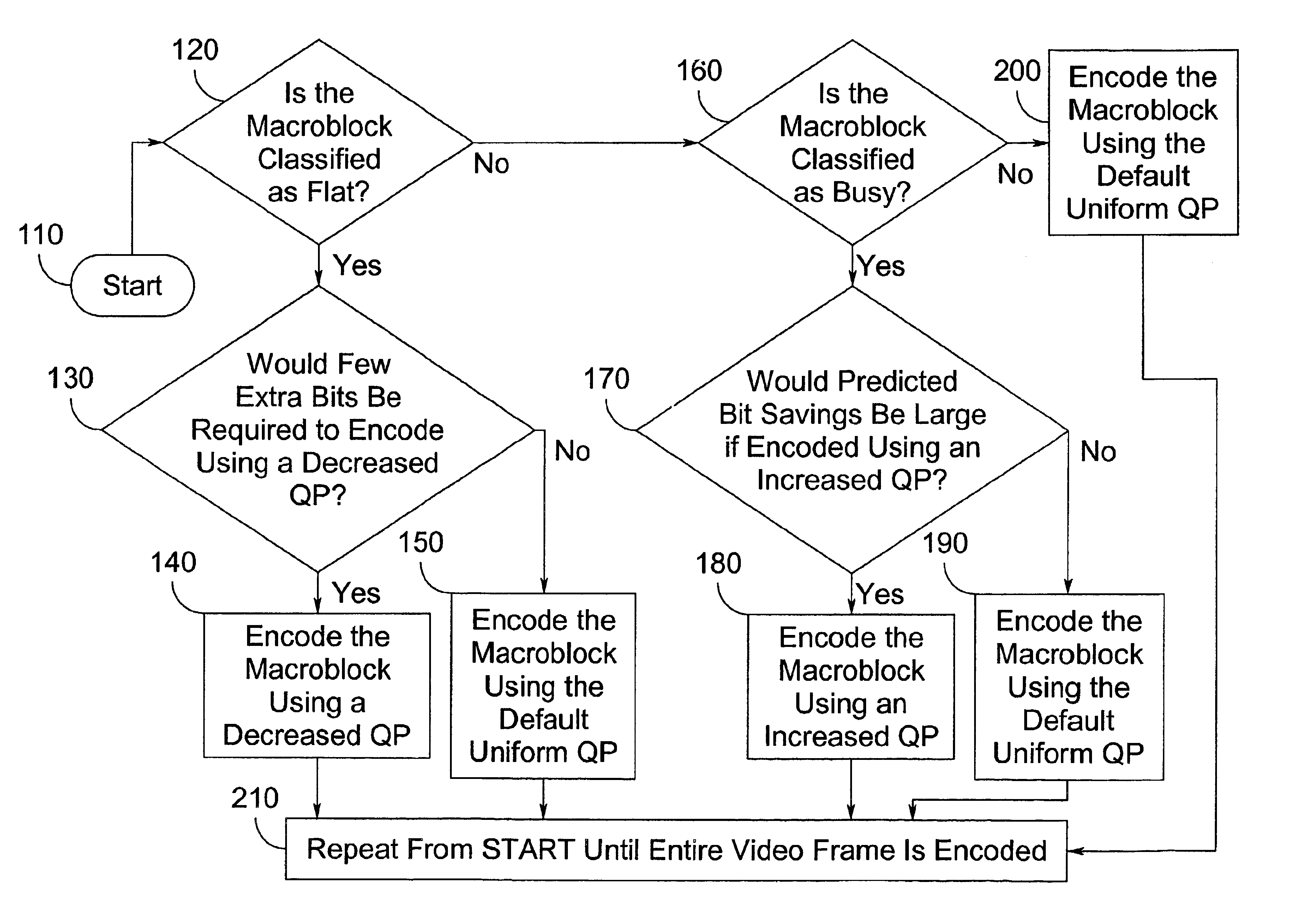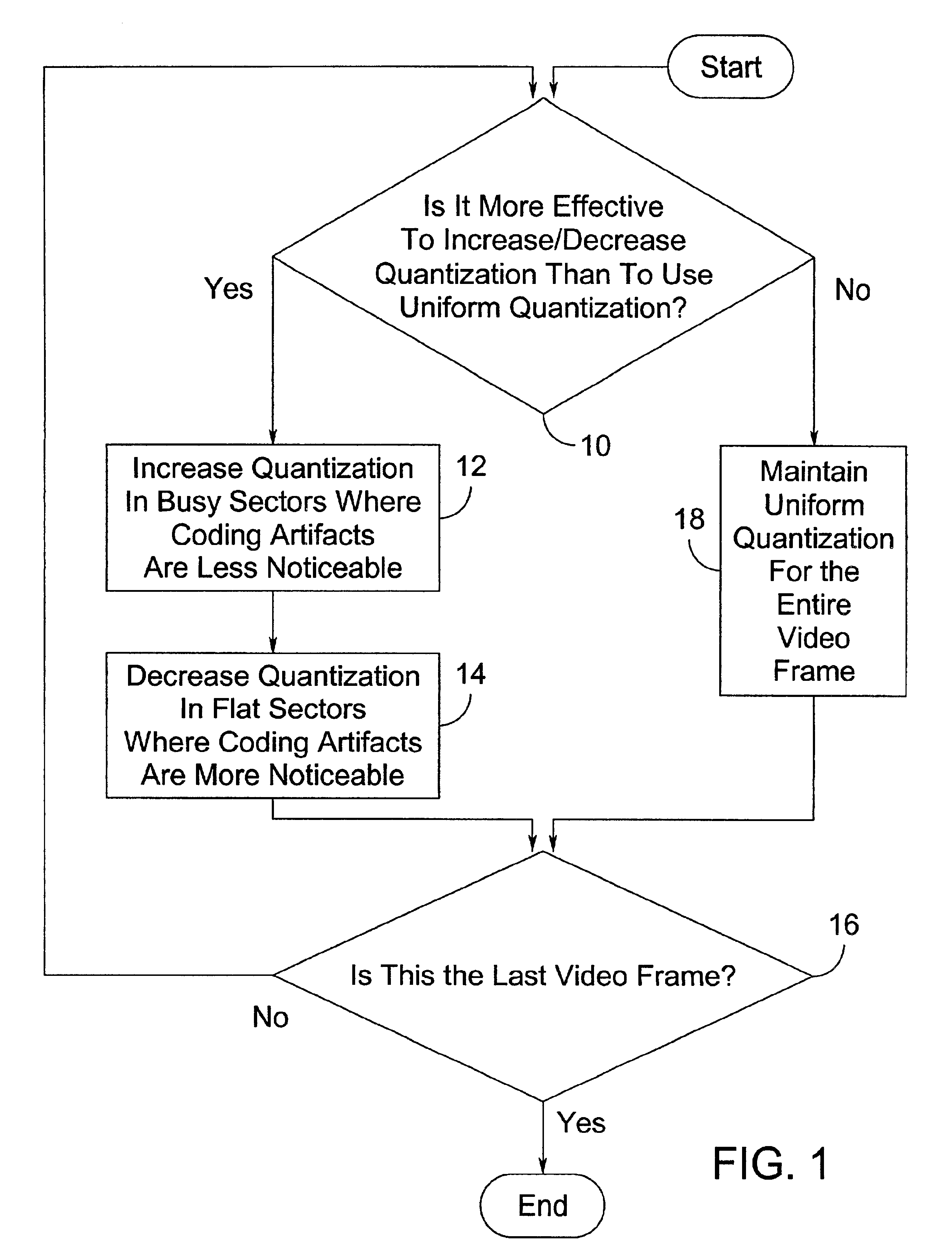Adaptive quantization based on bit rate prediction and prediction error energy
a bit rate prediction and error energy technology, applied in the field of adaptive quantization based on bit rate prediction and prediction error energy, can solve the problems of significantly improving video quality, methods that are not suitable for one-pass video coding, and methods that fail to economize bit cos
- Summary
- Abstract
- Description
- Claims
- Application Information
AI Technical Summary
Benefits of technology
Problems solved by technology
Method used
Image
Examples
Embodiment Construction
in the TM5 Video Codec
The optimized adaptive quantization of a preferred embodiment of the present invention was first used in the well-known TM5 MPEG2 video codec. Exemplary experiments applied two techniques listed below to three identical video sequences and compared the results:
An adaptive quantization method using a preferred embodiment, resulting in a bit rate B for the encoded sequence.
A uniform quantization method using the same quantization step size for all macroblocks, in which the step size was modified until the same overall bit rate B was obtained as from the adaptive method above.
1. First Video Sequence of Girls Dancing
The beginning of the sequence has a background with two colors. The adaptive quantization method of a preferred embodiment reduced the quantization noise and coding artifacts in the background. In the rest of the sequence, girls are dancing. The textures in the dancing scene are very smooth, and so there is not much potential for freeing surplus bits by...
PUM
 Login to View More
Login to View More Abstract
Description
Claims
Application Information
 Login to View More
Login to View More - R&D
- Intellectual Property
- Life Sciences
- Materials
- Tech Scout
- Unparalleled Data Quality
- Higher Quality Content
- 60% Fewer Hallucinations
Browse by: Latest US Patents, China's latest patents, Technical Efficacy Thesaurus, Application Domain, Technology Topic, Popular Technical Reports.
© 2025 PatSnap. All rights reserved.Legal|Privacy policy|Modern Slavery Act Transparency Statement|Sitemap|About US| Contact US: help@patsnap.com



